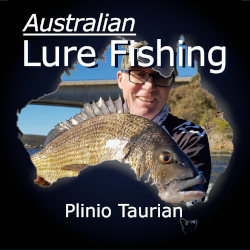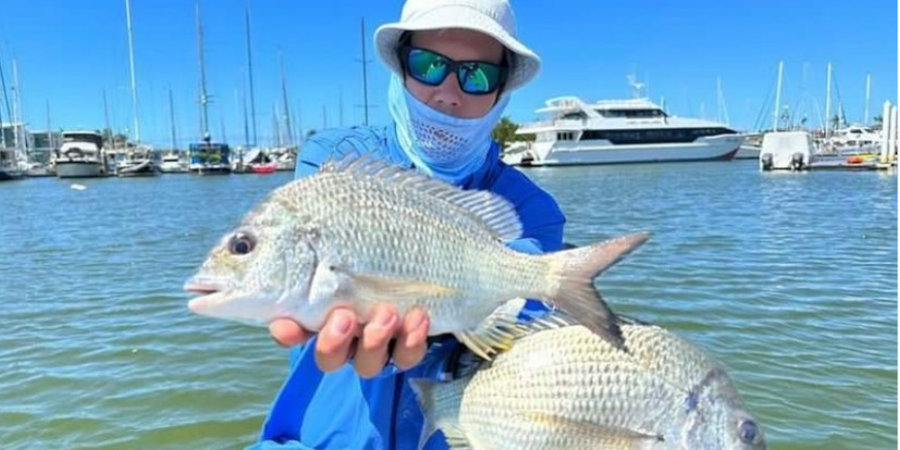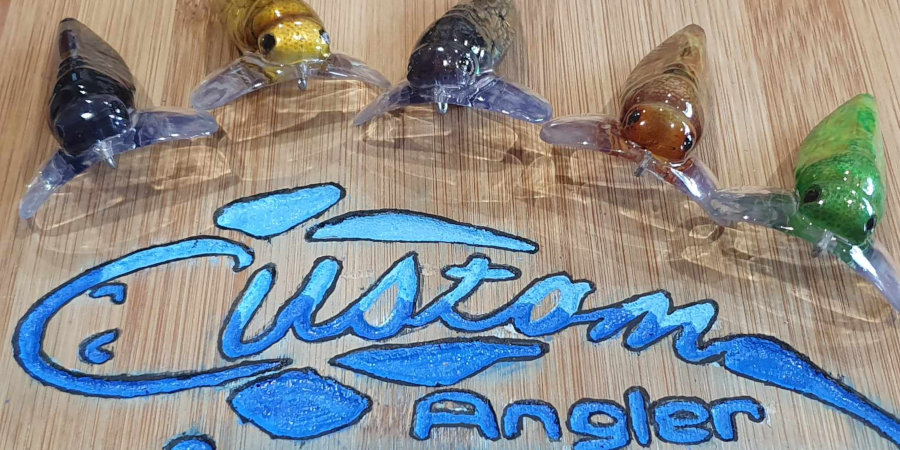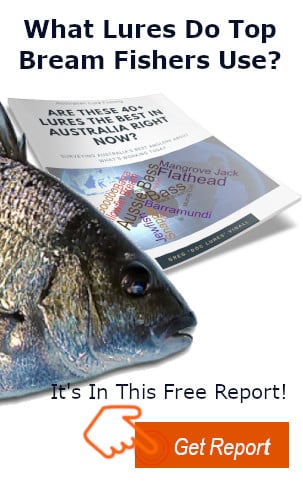
Aaron Donaldson
NSW Central Coast Identity
Aaron has fished the NSW Central coast for multiple species since his childhood. He used to write regularly for Fishing Monthly Magazine and has worked in the tackle industry for over 30 years. He’s recently launched a small lure making business Azz Lures, definitely worth checking out!
Aaron’s NSW Central Coast Bream Tips
- It’s important to fish early morning if you want bigger fish. Late afternoon can fish well too, but being on the water before the boat traffic starts is a good plan. That said, occasionally you’ll get a really good bite in the middle of the day.
- Typically there is still good surface fishing in the Central NSW estuaries until April, but heavy rain and flooding in February and early March have shut the topwater bite down early. Fresh water is less dense that seawater and will sit on top, so look on your sounder for places where fish are sitting in deeper water of 3-4m and can be tempted with vibes or blades.
- Keep an eye open for rock piles that are former ballast heaps from the old timber boats. Where these are on the edges of weed beds you’ll usually find bream on them, especially early in the morning.
- Bream can be caught on any tide. It’s worth focussing on top of the flats in the incoming tide and around the top, shifting to the drop-offs and channels as the tide runs back out. Be prepared to move with the tide and you’ll catch fish any time.
- Aaron likes to fish in strong winds and position himself so he has wind assisted casts. Chop and a bit of stirry, dirty water can stimulate a bite and the fish tend to feed much more aggressively and are less easily spooked.
- “If you’ve seen a bream, it’s probably seen you ten minutes before”. Long casts are important as bream are more likely to crash a lure when it’s a good distance from the boat.
- If the fishing gets tough it’s time to “finesse it up” and drop down to 3lb leaders and small metal blades such as the Ecogear ZX range, with plenty of scent.
Aaron’s Bream Fishing Tackle
- A 7’, 1-3kg rod with a light tip and a 2000 size reel loaded with 4lb braid and a 3-8lb fluorocarbon leader. This outfit is good for clearer water without heavy structure and for throwing light soft plastics.
- A second rod in the 2-4kg range with a 2500 size reel, 15lb braid and 10 lb leader is also very handy when you need to extract fish from heavy cover such as oyster racks or are casting heavier lures such as vibes.
Aaron’s Bream Fishing Tackle
- The 70mm Bassday Sugapen works well when long casts are made over water that is sufficiently shallow that you can see the bottom. Work this lure swiftly with just an occasional pause. If a fish swirls on this lure but doesn’t hit it, Aaron finds that halting the retrieve and leaving the lure on the spot for a few twitches will often convert the interest into a strike.
- A 3” Berkley Gulp Minnow in Pumkinseed colour rigged on a 1/32 Berkley Nitro jig head can be used on flats and around weedbeds. Cast the lure long over the flats, allow to sink to the bottom and simply wind back at a fairly fast, constant speed. Simple as that. Sometimes if you have a missed strike it can pay to pause for a second or two – Aaron even snips a little of the lead off the hook at times to lighten the 1/32 oz jig.
- The Samaki Vibelicious and Thumpertail (70mm) in Whitebait or Pearl Shrimp is Aaron’s “Big Fish Lure”. The Vibelicious can be cast and allowed to sink to the bottom, then worked in small hops off the bottom – a little fish attractant doesn’t hurt on this lure. The Thumpertail works better when the bait and fish are in deeper water and a little off the bottom -it’s often taken on the drop, so watch for “ticks” on the line as the lure falls and be ready to set the hooks.
- With the current conditions of freshwater sitting on top of the salt a small hard body such as a deep diving Berkley hard body or a Jackall Chubby in brighter colours can be a really good option. Fishing around the rocks and washes at headlands and areas down towards the mouth of the system is a good strategy. Punch the lure into the gaps between the weed and then twitch it back out.

Fishing In Hobart: A Bream Masterclass With Plinio And Deathy
Check out a swag of little known techniques and insights for fishing the Derwent River system for bream in this awesome interview with Plinio Taurian.

Fishing At Forster: 5 Top Spots With Local Gun Luke Austin
The fishing at Forster – Tuncurry is superb, all year round with numerous options for land-based and boating anglers alike. Luke Austin has lived there all his life and shares some great spots for visiting anglers and locals alike.
Unveiling the Secrets of Tuggerah Lake Fishing: Adam Amos on Bream
Tuggerah Lake Fishing is EPISODE 668. Check out our archives for more information on Bream Fishing!Introduction to Tuggerah Lake Fishing Tuggerah Lake, nestled on the NSW Central Coast, is a prime destination for bream fishing, easily accessible from Sydney. It's a...

Ben Monforte’s Revolutionary Approach to Moreton Bay Bream Fishing
Ever considered using Japanese Free Rigging techniques to target bream? That’s exactly what today’s guest Ben Monforte shares with us in a fascinating techniques-based interview.

On Yamba Bream, Pimping Lures and the WRFL With Laurie Anderson
Yamba can be an exceptional fishing spot – and bream are high on the list of targets for many anglers. Tournament fisho and lure customiser Laurie Anderson shares her tips and advice in this episode.

Fishing In Hobart: A Bream Masterclass With Plinio And Deathy
Check out a swag of little known techniques and insights for fishing the Derwent River system for bream in this awesome interview with Plinio Taurian.

Fishing At Forster: 5 Top Spots With Local Gun Luke Austin
The fishing at Forster – Tuncurry is superb, all year round with numerous options for land-based and boating anglers alike. Luke Austin has lived there all his life and shares some great spots for visiting anglers and locals alike.
Unveiling the Secrets of Tuggerah Lake Fishing: Adam Amos on Bream
Tuggerah Lake Fishing is EPISODE 668. Check out our archives for more information on Bream Fishing!Introduction to Tuggerah Lake Fishing Tuggerah Lake, nestled on the NSW Central Coast, is a prime destination for bream fishing, easily accessible from Sydney. It's a...




0 Comments